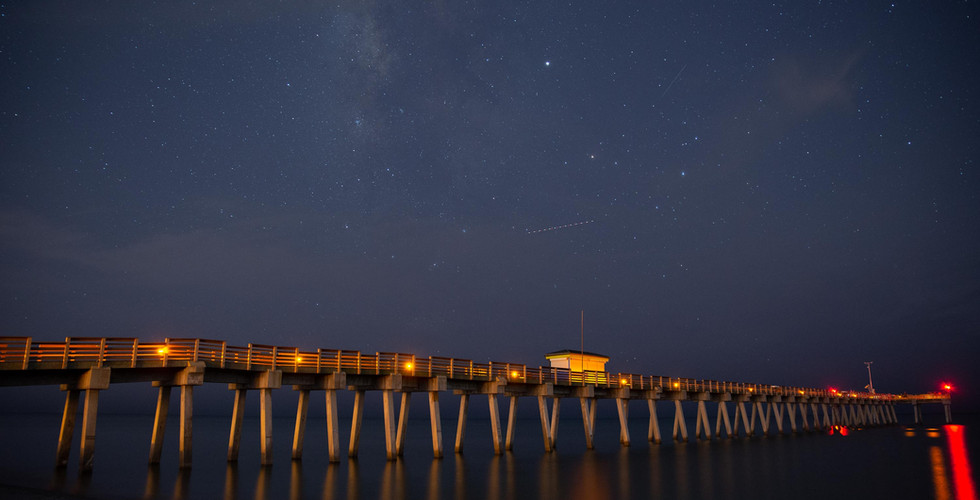Foto Dono's 2021 Milky Way Season - Part 8 - Now what?
- Donovan Evans-Foto Dono
- Jan 5, 2021
- 4 min read
Updated: Jan 19, 2021
I mentioned before, way back in Part 1, settings, equipment, and processing play a small part. The majority of the time is doing research, scouting locations in the middle of nowhere, and sacrifices to the weather god of your choice. I wanted to lay out my thoughts about the research, and I probably went too deep for some. I mean, I wrote four parts about my thoughts, pretty selfish if you ask me. 😜
Here's a much shorter recap
Part 1 - Equipment - get a wide-angle "fast" lens, manual camera, sturdy tripod.
Part 2 - Settings - ISO 1600-3200, f/1.4 or f/2.8 (see fast lens), Shutter=focal length/500 (again see lens).
See, that's much shorter. 😜
Also, here is a list of the most important to the least.
Location - Where to shoot
Research - When to shoot
Lens - Faster the better, wide-angle 14mm to 24mm
Settings - Understanding exposure
Camera - Any - DSLR or Mirrorless
Tripod - Any - The sturdier, the better
Processing - Uncovering the Milky Way
You can make arguments for a different arrangement. However, if you are in the beginning, it's an excellent guide to use. My photography teacher, Bob Edgington, was fond of saying, "Think before you click." Then he would turn around and say, "Push the damn button already!" No matter how much you think about it, you still have to do the work and fail miserably. However, sometimes those mistakes have an unexpected result. So, think about the where and when. Get a decent lens and camera and shoot it already.
RAW and JPEG Captures
Awesome! Great! You've gone out and captured some stunning photos of the Milky Way. However, you are probably saying to yourself, "They look pale and whispy. Also, what's with this yellow sky?"
There is at least one other camera setting you should think about before you head out. It is switching the camera from capturing images in JPEG to RAW. This part has nothing to do with the exposure of the capture. It's how the camera records the light data once it hits the sensor.
Light data is just a term to describe the collection of light converted into a digital file. When saved as a JPEG file, the file compresses the data—keeping the light data as a JPEG file isn't bad. It saves space and therefore allows more captures. You can still edit the file and make some pleasing results. However, it limits the amount of recoverable detail.
RAW is a generic term to describe a collection of unedited data. Almost every camera allows you to capture and save RAW data. If you choose to shoot in JPEG only, the RAW data isn't saved. If the camera recorded the RAW images, there is an opportunity to recover details lost in the JPEG capture. Aspects are lost when the file becomes compressed, like recovering and fixing the yellow sky.

The first image is the JPEG file, and the middle is the edited version in JPEG, then applied those same edits to the RAW version in the last picture. I photographed them in very heavy light pollution. To maximize the recovery of the recorded light data, I needed to work with the RAW data. The JPEG version is a good photo of the Milky Way. There is just a little more data that can be mined with the RAW. When compared side by side, you can see a difference.
Here are some additional examples shot in RAW with their final edits and taken in heavy light pollution at Caspersen Beach.
Why wasn't RAW mentioned at the beginning of the series? Simple, it's not critical to photographing the Milky Way. I can hear the collective gasps of photographers with that statement. After all, I did say you recover more detail with RAW data. Yes, but that is only important to those who are looking for that extra bit of data. There is nothing written in stone, anywhere that your images would be better in RAW.
The reason is that the perception of the Milky Way is subjective.
Some of you may ask, "Aren't the photos accurate?" The answer is no. All photography is subjective. The myth of photography is the photos are factual. They are not and never have been lone examples of truth. You could think of them as interpretations of an event. The world wasn't black and white or sepia before the introduction of color film. A photograph of you, taken decades ago, looks much different than your memory from then. The world inaccurately refers to photos as memories. Think of them as reminders or suggestions of how things looked when the photographer created the image.
The next question you may ask is, "Don't you shoot in RAW?" The answer is, yes, I do. Because, for me, starting with more data, I can whittle it down until I can reveal the image inside the data.
Let me put it another way. No one has ever asked me if I shot either a JPEG or RAW image unless they are a photographer.









תגובות